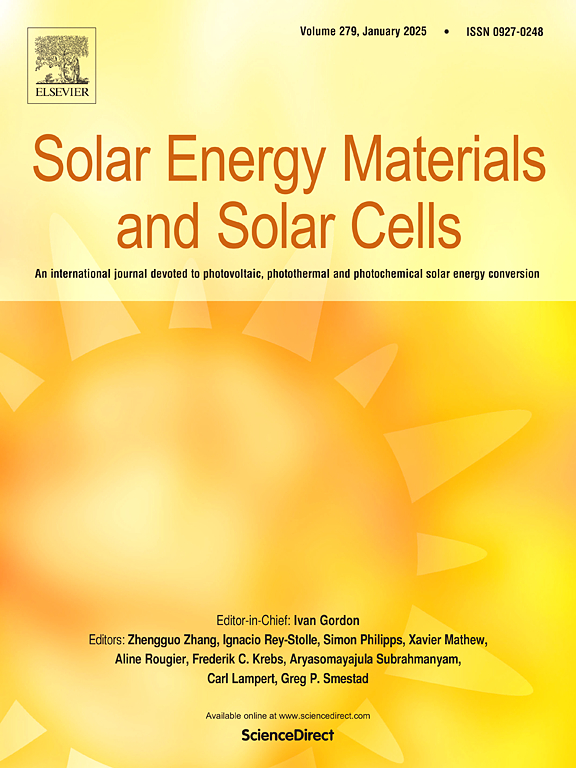Comprehensive consideration of light soaking improvement for silicon heterojunction solar cells
IF 6.3
2区 材料科学
Q2 ENERGY & FUELS
引用次数: 0
Abstract
Monocrystalline/Amorphous silicon heterojunction (SHJ) solar cells exhibit improved power conversion efficiency (PCE) by virtue of light soaking (LS), because photons activate effective doping of B/P atoms by promoting the movement of metastable H atoms in the amorphous silicon (a-Si:H) network. In this article, a comprehensive consideration of irradiation intensity, temperature and time duration on the LS enhancement are further investigated. We propose the necessity of thermal assistance for LS, it not only provides more phonon-assisted movement of weak bonding H, but also reduces the disorder and defect density of a-Si:H films via decreasing the weakly bonded H concentration and changing the Si-H bond configuration. Thermally-assisted light soaking also improves the electrical property and field passivation property of doped a-Si:H and strengthens a-Si:H/c-Si heterogeneous interfaces. However, very high temperature or persistent heating decreases cell performance caused by degradation of chemical passivation. In our experiment, the optimal gain of PCE of 0.33%abs is obtained through a brief LS at 7000 W/m2 irradiation intensity under 135 °C for 60 s.
求助全文
约1分钟内获得全文
求助全文
来源期刊

Solar Energy Materials and Solar Cells
工程技术-材料科学:综合
CiteScore
12.60
自引率
11.60%
发文量
513
审稿时长
47 days
期刊介绍:
Solar Energy Materials & Solar Cells is intended as a vehicle for the dissemination of research results on materials science and technology related to photovoltaic, photothermal and photoelectrochemical solar energy conversion. Materials science is taken in the broadest possible sense and encompasses physics, chemistry, optics, materials fabrication and analysis for all types of materials.
 求助内容:
求助内容: 应助结果提醒方式:
应助结果提醒方式:


